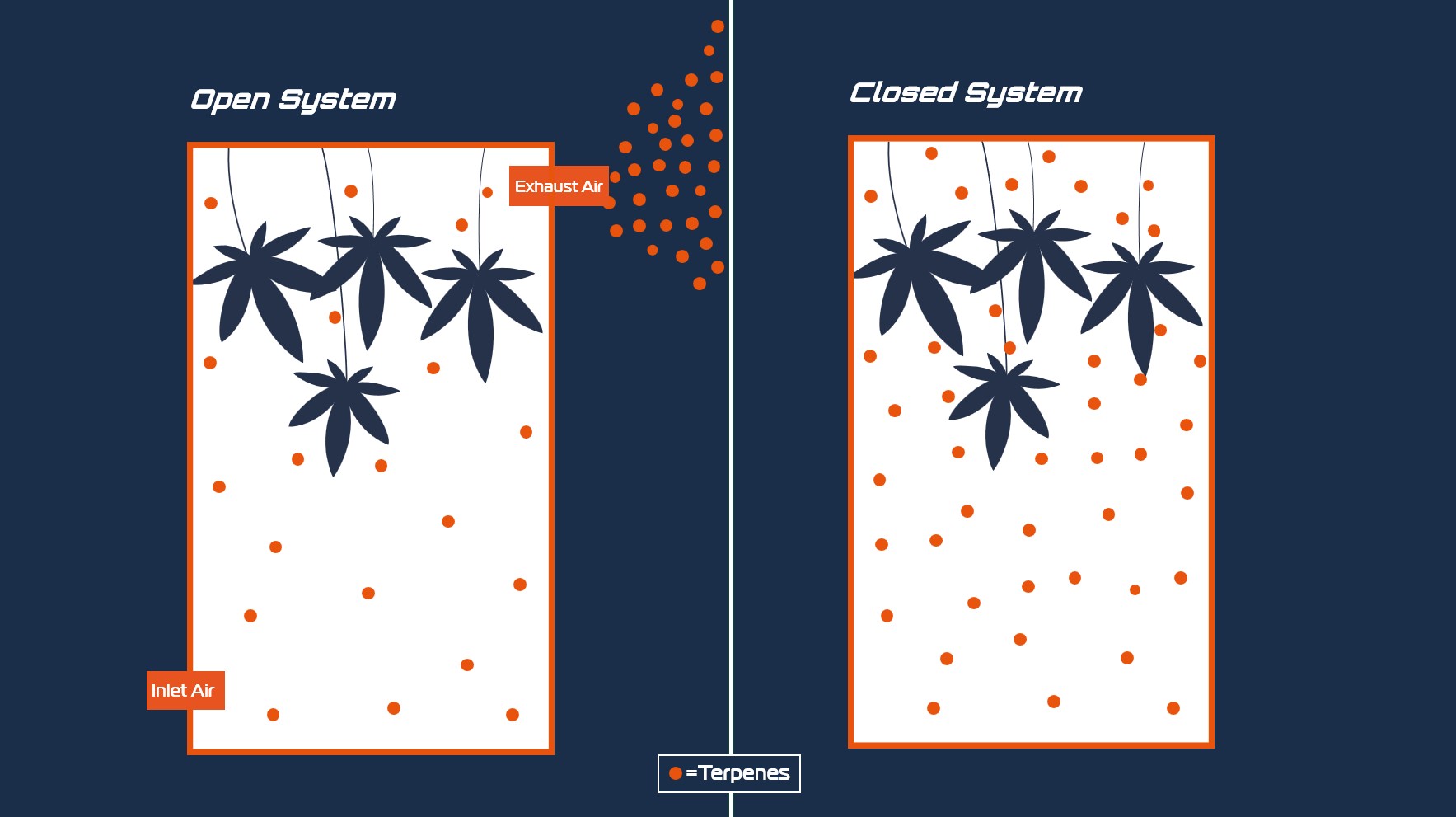
Terpene Saturation in the Air: The Invisible Influence on Aroma and Quality
What does “Air Saturation with Terpenes” mean?
During the drying process, not only water evaporates from your flowers, but also volatile aromatic substances known as terpenes. They are responsible for the characteristic aroma of your strain and have an influence on the therapeutic effect. The more terpenes are released into the surrounding air, the more “saturated” this air becomes. And now it gets exciting:
👉 In open systems (e.g. with window ventilation or active supply/exhaust air), the evaporated terpenes are constantly removed from the room. As they do not remain in the air, the plant continues to release terpenes to compensate for the concentration gradient. The result: a constant loss of aroma.
👉 In closed systems, however, the terpenes remain in the air and gradually saturate it. As soon as an equilibrium is reached, the flowers hardly release any more terpenes: The air is already saturated. The aroma remains in the room – and above all: in the flower.

Drying with Open Systems
- Terpenes are constantly transported outside by the constant movement of air.
- At the same time, the plant continuously releases new terpenes to balance the concentration in the air.
- The air therefore remains low in terpenes – and the loss adds up over the entire drying time.
Drying with Closed Systems
- The air becomes terpene-saturated over time, so that hardly any more terpenes escape.
- The flowers dry gently – without any unnecessary loss of aroma.
- The entire process is controlled, constant and without external influences.
This type of drying is reminiscent of the principles of food ripening: slow, aroma-preserving drying in a microclimatically stable room – just like ripened cheese, tobacco or wine. The result? 👉 More depth of flavor, clearer variety profile, maximum preservation of terpenes.
Conclusion: Air saturation - the underestimated factor in drying
If you want to ensure the full potential of your harvest when drying your flowers, you should not only pay attention to temperature, humidity or VPD. Dealing with the terpene saturation of the air is a crucial, but often overlooked lever for maximum quality:
Put simply, everything you smell when drying is aroma that you are losing. So next time you’re drying, don’t just take a look at your hygrometer readings – but also ask yourself: is the aroma staying where it belongs?
